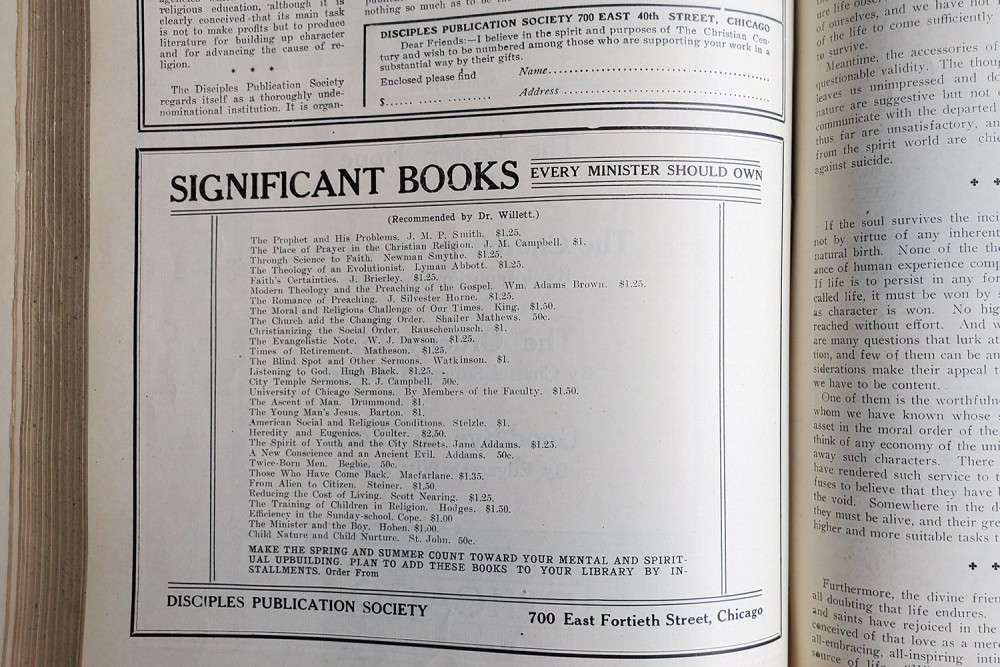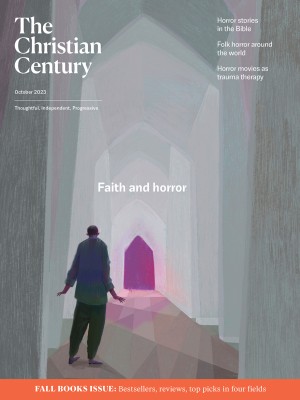The racist scientism of our past
The Century, like the Smithsonian, once supported eugenics.

(Century photo)
Last year, two Washington Post reporters began an investigation into the Smithsonian National Museum of Natural History’s collection of human remains. The collection includes 255 brains, some with records of people’s race—most of them Black. Beginning in 1903, the brains were taken, often without consent, to form what Ales Hrdlicka called his “racial brain collection.” The anthropologist sought anatomical evidence that White people are superior. This belief that racial superiority could be confirmed by science—part of a larger eugenics movement—was widespread in the late 19th century and persisted well into the 20th.
Our Century forebears had some sympathies with the eugenics movement. Religion scholar Beth Stroud recently contacted us after she noticed some ads the magazine published in 1916. In one, the Disciples Publication Society offered a list of 30 “significant books every minister should own” that included Heredity and Eugenics, which culminates with an essay by Charles Davenport, a leading proponent of eugenics. That sent us digging into our archives to see what else we could find.
Read our latest issue or browse back issues.
The editors’ interest in eugenics seems to have come primarily in the 1910s, when eugenics bills were being debated in state capitols. “Are eugenic laws constitutional?” asks one editorial (Feb. 26, 1914). “We hope they are. They ought to be.” The bills in question included provisions requiring certificates of health before marriage as well as forced sterilizations. “The discussion of eugenics, race betterment and marriage regulation is productive of a large amount of good,” says the editorial.
This idea that better people could be engineered by science took White supremacy as its guiding principle, and it was an attractive idea to our predecessors at that time. They justified their interest with a scientism not far removed from Hrdlicka’s.
Current Smithsonian secretary Lonnie Bunch addresses the Post’s findings in an August 20 op-ed in that paper. Hrdlicka’s work, he writes, is “abhorrent and dehumanizing.” So are the pro-eugenics opinions that were published in these pages. They implicate the magazine in a long-standing tradition of White supremacy. They are a betrayal of the doctrine of the incarnation. We apologize for them. We are proud of the Century’s social justice heritage, from its social gospel roots to its strong voice against the Japanese internment to the role it played in the civil rights movement. But we can’t look back without a full accounting.
An apology can’t right these wrongs. Instead it raises harder questions we can’t fully answer. How have the ideas that drove the eugenics movement shaped our organization’s more recent history? Where is such logic still alive? And what will future century editors say about us? Where are we clouded by the faulty certainties and harmful ideologies of our own day?
In his op-ed, Bunch apologizes for the actions of his forebears and charts a course for making what amends can be made. He notes the importance of not just returning stolen human remains but also “interrogating and dismantling the racism that inspired these collections in the first place.” This is why the century, like the Smithsonian, looks back: to interrogate and begin to dismantle the racism that has informed our work in the past and that haunts us still.






